Text and Photos by Henrylito D. Tacio
Who has never heard of the Ancient Rome arena, where gladiators’ fights were held. The historic monument, touted to be one of the most famous and well preserved monuments of the Romans, stands at the heart of modern Rome and attracts thousands of tourists every year.
But why do people – particularly tourists – visit the area? Mary Jo Arnoldi, chair of the anthropology department at the Smithsonian National Museum of Natural History, contends: “Ancient ruins give us a connection to the past that’s visceral. This was a real place, and you can walk through it.” Lynn Meskell, director of the Stanford Archaeology Center, adds, “Ruins represent human achievement writ large.”
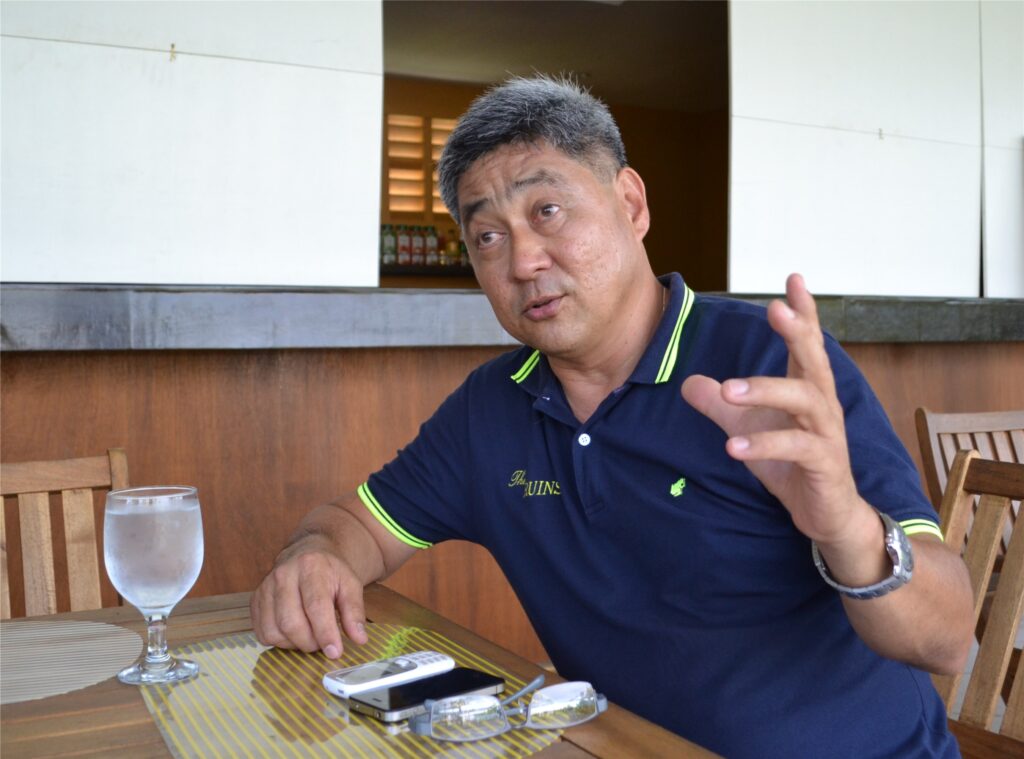
Such was also the idea of Raymund Javellana, the man who is trying to restore The Ruins, which is listed by oddee.com as “one 12 most fascinating ruins of the world,” to its former glory. A mansion actually, it is located in Talisay City in Negros Occidental.
“I am so glad that it was not destroyed completely. With the blessings of The Lord, we were able to restore the mansion itself. I challenge people who keep on destroying the old structures to please stop and make some good use of it,” he said when he accepted the award for The Ruins as Best Destination (Heritage Sites category) at the first Choose Philippines Awards.
The other nominees for the coveted recognition were Calle Crisologo in Vigan, the Chocolate Hills of Bohol, Paoay Church in Ilocos Norte, and Las Casas de Acuzar in Bagac, Bataan.
But there is a very interesting story on how the mansion was built and why it was ruined – although not completely.
Love, so goes a line of a song, comes from the most unexpected places. That happened to Mariano Ledesma Lacson, a sugar baron from Negros. The most sought after bachelor was visiting Hong Kong together with a wealthy friend when he met Maria Braga, a Portuguese lady from Macau and daughter of a ship captain.
He was smitten by her beauty. So, he courted her earnestly until she finally said yes. To make the long story short, they got married and he brought her to his ancestral house in Talisay, where they raised their family together.
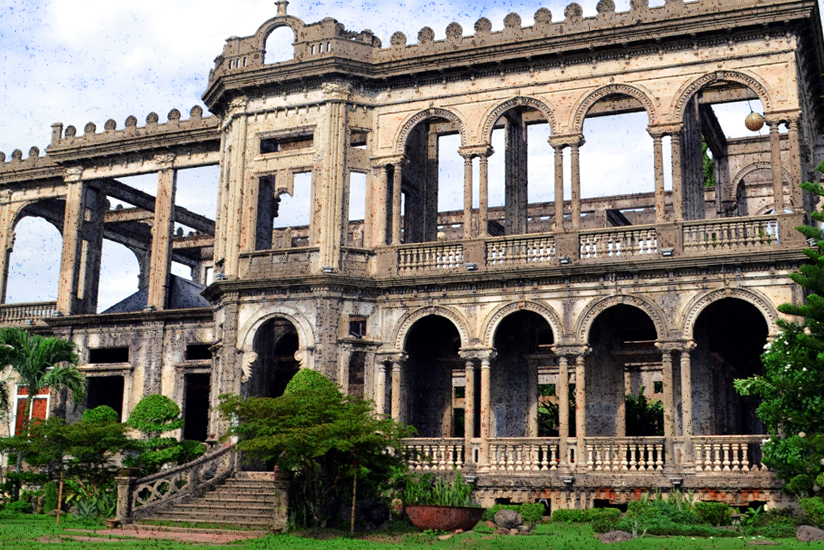
Children came after one another: Victoria, Rafael (who later became the governor of Negros Occidental), Mercedes, Natividad, Sofia, Felipe (who grew up and became a mayor of Talisay), Consolacion, Angelina, Ramon, and Eduardo.
Maria was pregnant with her 11th child when she slipped in the bathroom. She was bleeding; her condition was so precarious that traveling outside of the house was out of question. Mariano summoned some of his men to get a resident doctor from a nearby town. He told them to use a horse-drawn carriage, then the fastest mode of transportation.
This happened in 1920s and it would take 2 days to traverse the various sugar farms to Silay. So, by the time the doctor arrived, on the fourth day, Maria and her child were already dead.
Mariano was totally devastated by the sudden death of the love of his life. He went into a depression for some time but knowing that he had still children that needed his attention, he tried to get out from his depression and focus instead of building a house in memory of his beloved wife.
But before doing so, he consulted his father-in-law about the idea. When he knew about it, he fully supported the plans of his son-in-law. Being a ship captain, he carted many items from Europe and China — ranging from machuca or handmade custom cement tiles, chandeliers, and China wares. He even brought with him some construction workers from China just to help build the mansion.
A local builder by the name of Engineer Puentevella was entrusted to make the design and building specifications. Mariano asked his son Felipe to supervise the construction and make sure that A-grade mixture of concrete was precisely poured.
The marble-like effect of high-grade concrete can be felt by touching the posts and walls of what remains now of the mansion. The entire mansion has a floor area of 900 square meters: 450 square meters upstairs and 450 square meters on the lower ground. Ten rooms occupied the mansion: 8 rooms for children, a Master’s bedroom and a family room.
The structure of the two-story mansion was of Italianate architecture as evidenced by its neo-Romanesque columns all around. It has a close semblance of the façade of Carnegie Hall in New York City.
“Since the engineer was a Filipino, it is believed the design came from that of Maria’s ancestral mansion which was given by her father to Mariano as sample,” an inflight magazine said. “The imprimatur of Maria’s father, a ship captain, is now clear from the shell-inspired décor all around the top edges of the mansion – the same ones that identified the homes of ship captains in New England at that time.”
It took about three years to finish the Don Mariano Lacson Mansion. According to Javellana, it was built because of the husband’s devotion to his wife. He likens it to Taj Mahal, a white marble mausoleum built by Mughal emperor Shah Jahan in memory of his third wife. Proof of the unwavering love for his departed wife was the initials engraved on every post of the mansion. The 2 M’s, facing each other, stands for Mariano and Maria.
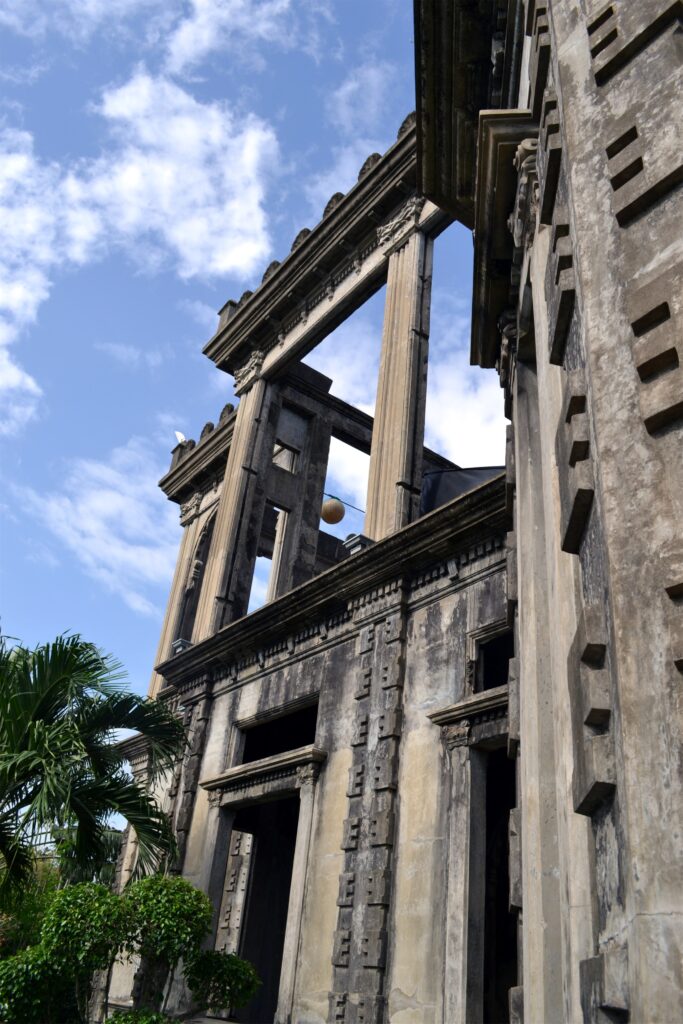
At that time, the mansion was the largest residential structure ever built in the area. It was constructed at the center of the 440-hectare farm. The Lacson family lived in the mansion happily. But it was not “ever after” as Japanese forces invaded the country in December 1941 after Japan’s declaration of war upon the United States, which controlled the Philippines at the time and possessed important military bases.
In anticipation of the war and not wanting to get caught in the middle of their 440-hectare farm, the Lacson family abandoned the mansion. They left behind all their furniture, China wares, home décor and some personal belongings, locked up the place, and left a caretaker to watch over the mansion.
The American soldiers came to the place. Sensing that it might be used as headquarters of the Japanese troops, it was decided that it would be burned just other big houses in the area. While it took three years to build the mansion, it took only three days to consume all of its roofs, ceilings, two-inch wooden floors, doors, and windows which were all made of hardwood of tindalo, narra, and kamagong.
But the three-day inferno did not flatten the whole mansion. Thanks to its oversize steel bars and the meticulous way of pouring A-grade mixture of concrete, the skeletal frame remains.
The four-tiered fountain in front of the remains of the mansion makes it a perfect replica of the ancient homes with spacious gardens – like those you see in the old city of Savannah, Georgia in the United States.
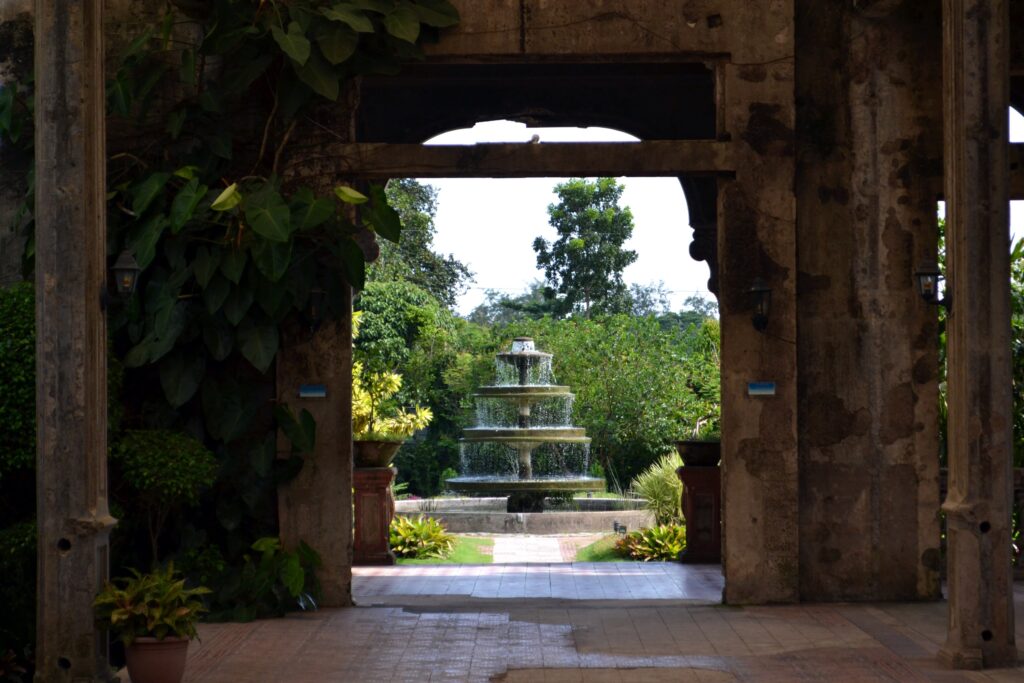
Joy Gallera Malaga, an independent writer who visited the place, wrote: “And most likely you would appreciate the mansion even if it was already reduced to its skeletal frame, or maybe it is its present condition that adds to its character and beauty. That’s the charm of old structures; it invites you to engage in an experience just by being there, getting to know it better through the stories it continues to tell.”
Filipinos would have never seen The Ruins – which was abandoned for 67 years! – had it not been for Javellana, who happened to be one of Mariano’s great grandsons. Raymund is the son of Ramon, who was the son of Mercedes, the daughter of Mariano.
Raymund had a travel agency in Manila when his mother requested him to come back to Negros and help her manage their sugar plantations. He now settles in Silay but on one of the trips to Talisay, he saw the abandoned mansion, which is located in Hacienda Sta. Maria. He decided to make it one of the province’s tourist attractions.
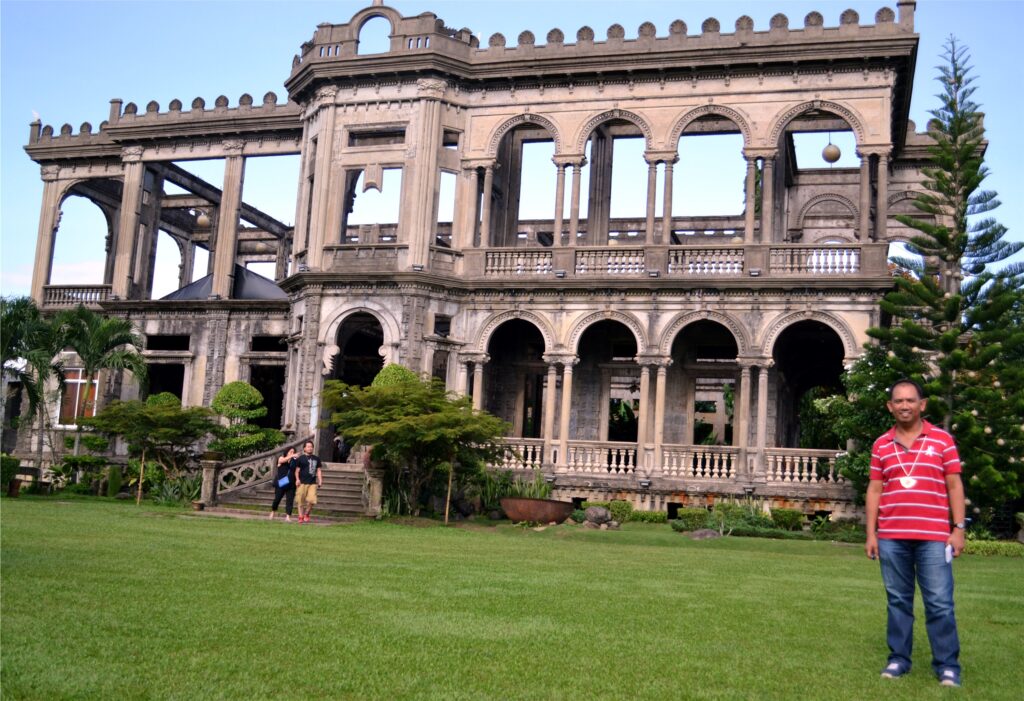
At first, the people he contacted were lukewarm about the idea. But Raymund pursued his plans. He might be thinking of that Hollywood movie in which one of the characters said, “If you build, they will come.”
In January 2008, he opened The Ruins to the public. Thanks to social media, the exposure to local and national televisions, and write-ups that came in various publications, people flocked to the place. In the beginning, there were only 25,000 visitors a year; but last year, it went up 80,000 visitors. With the recent recognition, Javellana expects the visitors to further increase.
Aside from being a tourist attraction, The Ruins is fast becoming known as a favorite venue for weddings and photo shoots. — ###








